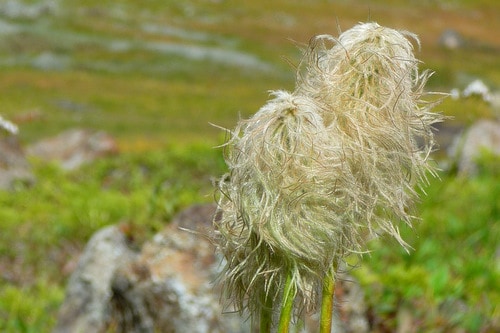Anemones and Jennys

I started a research project this week about Alpine Ecology, focusing on alpine plant adaptations. Over and over again I saw the name anemone. There was a Three-leaved anemone, Northern anemone, Lyall’s anemone, Cut-leaf anemone, Alpine anemone, Yellow anemone, Narcissus anemone, and the Western anemone. These flower names remind me of the Jenny and Jennifer’s of the world. There are a lot of us.
The year I was born the name Jennifer was the most popular girls name in the United States and Jenny was the 120th most popular. Chances are everyone reading this blog knows at least one Jenny or Jennifer and it is probable that we all know more than one.
Which is why I’m writing this blog. Just as there is more than one anemone in the North Cascades there is more than one Jenny at the North Cascades Institute. The other Jenny has been at the Institute for a while now, but me, I’m kind of a new comer. And it recently came to our attention that a number of people thought I was the other Jenny, Jenny Cloutier. What could I do?
Just like the anemones have descriptive names that often indicate something about their appearance, behavior, origin or use, I need a more descriptive name. Like Jenny Lee. Okay, so Jenny Lee doesn’t describe my appearance or behavior, but since I didn’t want to be “red-headed Jenny” or “talks really fast Jenny,” this seemed like the next best thing.
So next time you see a post by Jenny Lee know that it was written by the same Jenny you’ve been reading posts by for the last few months, with a new, more descriptive name.
And just in case you were wondering about the adaptations the Western anemone, pictured below, has made for life in the alpine zone I’ll share one with you. The stem and leaves of the Western anemone are covered with short, compact hairs. These hairs insulate the plant and retard the loss of of metabolic heat, protecting the stem and leaves from wind desiccation and they diffuse the strong alpine light, reducing the intensity and directness of the light that reaches the leaf surface.



Jenny Lee and fellow blog readers,
I too have come to face this same challenge. My name is Katie, and then there is Katie, and Katie…. wait a second, who? Oh, Katie.
STOP!
My name is Katie T
There is a Katie R
and Ranger Katie
I am not sure about the popularity of the name during the time of our births, I just think it is the greatest name there is!… nothing personal
So, I am now wondering if I should change my blog name to Katie T, as I just received two replies on my past blog about the Surrender Box that were meant for Katie R, written by two of her trail group members the Grizzly bears.
Can we do this for me too anemone?
From, Katie T
Ahh the secret is out!
Jenny-
curious to know- are there more anemones or saxifrages in the category of flowering alpine plants?
PS – there was a Jenny Lee in C2…
In response to Megan’s question. There are a few more anemones that are found primarily in the alpine zone, including: the Northern anemone, Alpine anemone, Yellow anemone, and Narcissus anemone. There are also a handful of saxifrage that grow in the alpine zone, although most of the saxifrages have large ranges, so they aren’t primarily alpine flowering plants.